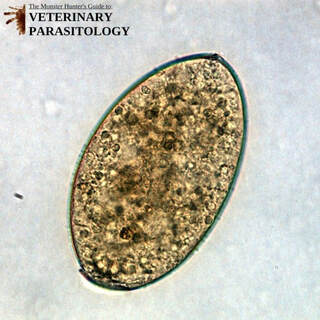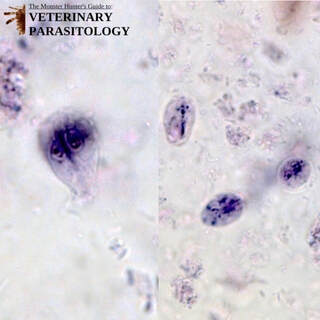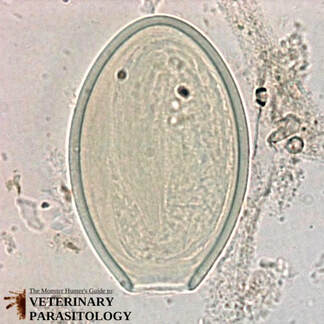Anoplocephala spp.(aka., Ileocecal-valve Tapeworm) |
Method of Detection:
Size:
|
Anoplocephala magna and Paranoplocephala mamillana(aka., Equine Tapeworm and Dwarf Equine Tapeworm, respectively) |
Method of Detection:
Size:
|
Dicrocoelium dendriticum(aka., Small Lanceolate Fluke, Common Lancet Fluke, Small Liver Fluke, Dicrocoelium lanceatum) |
Method of Detection:
Size:
|
Dictyocaulus arnfieldi(aka., Equine Lungworm) |
Method of Detection:
Size:
|
Eimeria leuckarti(aka., Coccidia, Globidium leuckarti) |
Method of Detection:
Size:
|
Habronema spp. and Draschia megastoma(aka., Stomach Worm of Horse) |
Method of Detection:
Size:
|
Parascaris equorum(aka., Equine Roundworm, Ascaris equorum, Ascaris megacephala) |
Method of Detection:
Size:
|
'Strongyle' Type Ova(aka., Large strongyles [ex., Strongylus spp.], Small strongyles [ex., cyathostomes], and Trichostrongylus axei) |
Method of Detection:
Size:
|
Strongyloides westeri(aka., Threadworm) |
Method of Detection:
Size:
|
Sources Cited:
- Zajac, Anne M., and Gary A. Conboy. Veterinary Clinical Parasitology. 8th ed. West Sussex: John Wiley & Sons, 2012. Print.
- Taylor, Mike A., R. L. Coop, and Richard L. Wall. Veterinary Parasitology. 4th ed. Chichester, West Sussex: Wiley Blackwell, 2016. Print.
- American Association of Veterinary Parasitologists. (2010). Retrieved 2019, from https://www.aavp.org.



